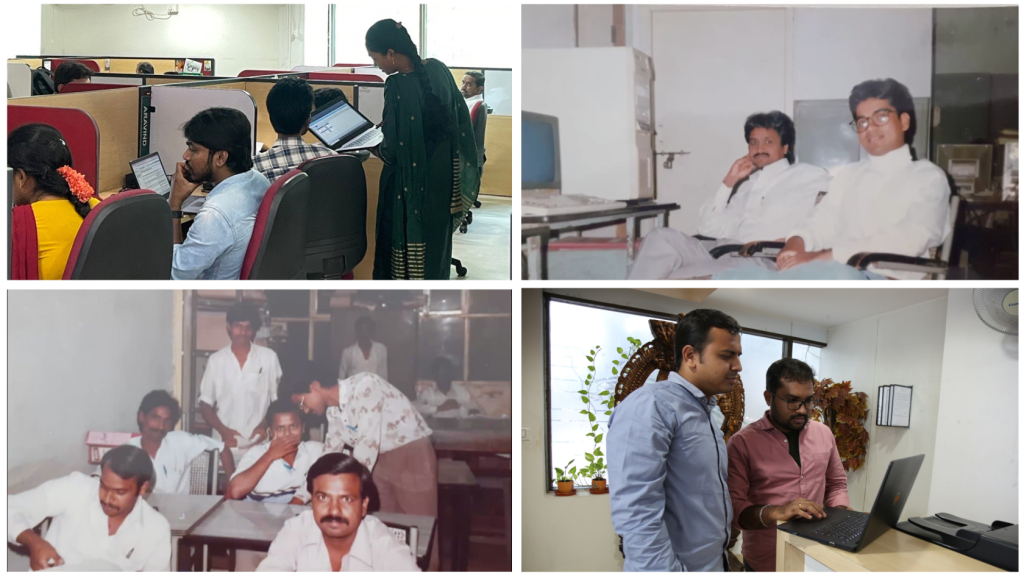
In the early days of software product development, everything feels like turbulence.
You are juggling a dozen moving parts: design needs rework, development overruns time, testing uncovers flaws, and customer expectations evolve faster than your UI can load. Timelines are fantasies. Priorities clash. And just when you think you have fixed one piece, another starts to crack. It is disorienting, exhausting, and can sometimes feel like trying to compose a symphony while learning each instrument on the fly.
This is the reality for every software product creator, especially when building your first.
At Sathguru Soft, we have lived that reality. In our formative years, we grappled with what every aspiring product maker does: scope creep, reworks, team fatigue, overpromising, and delays that became the norm. Every module felt like a restart. Every integration was a puzzle. And making a product felt more like surviving a storm than building an experience.
But here is the truth we have learned, through time, trials, and triumphs: product development has a rhythm.
And once you discover that rhythm, everything changes.
From Fragmented Movements to Synchronized Flow
Today, we have built nine SaaS products, including four full-scale ERP systems, Retail ViVA, SpinJenny, SugarCube, and ViVAgen. We did not stumble into this with luck. We arrived here because we endured the early chaos, studied it, and shaped order from it.
There is a tipping point in product development, one where pattern replaces panic, insight replaces instinct, and flow replaces firefighting.
That is when you stop “managing chaos” and start directing momentum.
Our leadership and development teams have clocked over 25 years of hands-on product engineering, and what once took months of hit-and-trial now flows as a refined, intentional system. It feels like jazz: improvisational, but precise. Loose, but with structure. Fast, but never frantic.
The Invisible Framework Behind Every Great Product
Most people see the end result: the app, the dashboard, the UX, the delight. But what they do not see is the underlying system that makes this possible.
For us, product building now starts with:
- Perfectly ordered analysis: We know what to ask, whom to ask, how to observe, and how to listen. The use case speaks before the code does.
- Validated architecture patterns: We do not reinvent wheels unless the terrain changes. We have mapped the terrain.
- Sequenced development rhythm: We know what to do first, what next, and what to leave last. This prevents fatigue and fights scope bloat.
- Test-before-you-code thinking: Our QA and dev teams are not sequential, they co-think, co-validate, and co-improve.
- User empathy pipelines: From internal testers to client pilots, feedback is no longer an afterthought. It has designed in.
This clarity does not emerge overnight. It arrives after hundreds of product releases, thousands of bugs, and countless days where things did not go to plan.
But once that rhythm locks in, it becomes your creative engine.
What We Now Call ‘Easy’ Was Once Unthinkable
Today, we can spin up a new product idea, vet it against real market use, prototype it in weeks, and launch internal pilots in record time. Why?
Because:
- We know how to begin (analysis clarity)
- We know how to prioritize (function before feature)
- We know how to sequence (architecture first, UX later)
- We know how to validate (early and with intent)
- We know how to release (tested, tempered, and tuned)
Each part of this cycle works like a drumbeat. And our team across leadership, development, QA, and deployment, has learned to move with it. We are no longer reacting to complexity. We are creating despite it.
The fun is back. The frustration is minimal. The output is real.
A Note to Young Product Creators
If you are in your early product-building days and you are struggling to breathe through the chaos, know that you are not alone. We were there. Everyone starts there.
What matters is that you:
- Keep learning from every miss.
- Observe your own patterns when you flow when you freeze.
- Build a system around your mistakes.
- Document what worked and re-use your rhythm.
Do not chase perfection. Chase rhythm. And one day, just like us, you will look back and smile at the days when a simple screen took weeks and every go-live felt like a miracle. Because then, you will be flowing too. And product making? It will be your music.
At Sathguru Soft, we enjoy building products with rhythm, depth, and purpose for over 25 years now and will continue to do so.
Share